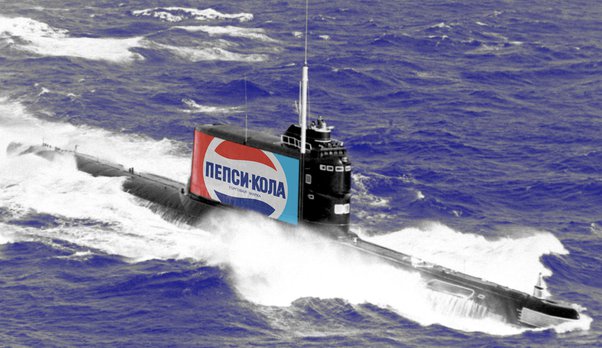Carl Emil Pettersson’s Christmas Day in 1904 didn’t turn out as he’d imagined.
The 29-year-old sailor found himself in an unlikely predicament: he was laid before a group of cannibalistic islanders from Papua New Guinea, wondering how he could avoid becoming their next meal.
Tabar Island’s inhabitants weren’t averse to eating other humans to survive. When the islanders discovered a man making his way out of a shipwreck – a bruised and battered Carl Pettersson – they were immediately wary of the stranger on their land.


The Tabar people approached the sailor with curiosity, and Carl knew he either had to get them on his side or face being eaten. What happened next would change Carl Pettersson’s life forever.
Carl Pettersson’s Early Life
Carl Pettersson was born in October 1875 in Sweden to Carl Wilhelm and Johanna Pettersson. Little is known about Carl’s formative years, but it is understood his father left the family home when Carl Jr was still young.
He was brought up solely by his mother until 1882 when the 17-year-old would take up work at sea. The young man would go on to become a sailor renowned for his seafaring skills.
Still, over the years, Carl was involved in several crashes and shipwreck situations, though his experience and quick thinking always ensured he made it out alive.
In 1888, he began working for The German New Guinea Company, whose headquarters were based in Kokopo, Papua New Guinea. This meant he often had to travel the huge distance from Sweden to the country in Oceania for work.
For a while, this worked out well for Carl. His job was steady, he was a confident sailor, and he enjoyed his time on the water.
After spending six years at sea, though, in 1904, he encountered his toughest challenges to date: his ship, named Duke Johan Albrecht, sank in the Pacific Ocean.
Carl survived the wreckage but found himself washed toward an island, where his journey to land was aided by a hibiscus hedge he managed to climb in.
However, his presence on the island didn’t go unnoticed.
The natives heard the commotion and made their way to the hedge the stranger was in and surrounded him.
Carl knew there was a high chance the islanders would kill him – they weren’t used to outsiders and didn’t take kindly to them simply turning up. Plus, it was widely known that certain islands in Papua New Guinea were home to cannibals.
The natives had never met anyone like Carl Emil Pettersson, though. The Tabar islanders were captivated by their unusual find. They lowered their weapons.
Encountering The Curious Islanders
The islanders were intrigued when Carl first opened his eyes; they were blue. They’d never seen a person with blue eyes before. This initial observation prevented the group from harming Carl, and they allowed him to live – for the time being, at least.
The islanders decided to carry the strange man to their king to see what they should do with the discovery.
Immediately, Carl impressed the leader, King Lamry. He was charming, looked nothing like anyone they’d ever seen before, and perhaps most importantly, he was freakishly strong. This alone impressed the king.
The islanders gave Carl food, water, and shelter while he rested up. This enabled the outsider to explore the island further.
As well as the island’s accommodating climate, its soil was fertile and well-draining. Carl could immediately see that it was perfect for producing coconuts.
In order to remain in good favor with the king, Carl convinced him that he could make him rich if he let him clear some ground for coconut plantations.
King Lamry, again impressed by the young man’s entrepreneurial spirit and promises of riches, gave Carl permission to transform Tabar into a coconut empire.
The once-cannibalistic islanders were now adhering to Carl’s influence, and they set about setting up the plantations.
Carl’s business venture was a success and turned the floundering Tabar economy around in just a few short months. He’d fully gained the respect and admiration of King Lamry, who would go on to introduce Carl to his daughter, Princess Singdo.
It was love at first sight.
Carl would leave the island for short trips back to Sweden but quickly began to call Tabar home. He learned the culture, forged friendships with the natives, and, in 1907, married Princess Singdo. By this point, he’d been on the island for three years.
The coconut plantation, now named Teripax, was thriving and enabled the island and its inhabitants to prosper.
For years, Carl lived a comfortable life as a prominent member of the Tabar community. His fellow islanders named him “Strong Charley” due to his atypical strength.
He and his wife, Singdo, would have nine children together, although one of their children would sadly pass away during birth.

However, tragedy would strike the island when King Lamry succumbed to old age. This would mean his successor was his daughter’s husband, Carl Pettersson. King Carl would take the role seriously and promised the islanders that he would bring even more wealth and prosperity to Tabar.
King Carl The First
The new king would follow through with his promise. He was well-liked by the islanders, ensuring they all had steady, well-paid work in the plantations he built. He had indeed brought prosperity to the island.
However, one of the things the island couldn’t offer was modern health care. Singdo Pettersson would fall ill with puerperal fever in 1921, a bacterial infection of the female reproductive tract that can occur after childbirth. Sadly, she would die from this infection.
Carl was a doting father, but with his growing coconut businesses to maintain, he struggled to take care of his eight young children. So, a year after Singdo’s death, he made his way back to Sweden to seek out a new wife and find a stepmother for his children.
In 1922, he met a woman named Jessie Louisa Simpson in his homeland. After a year of courting, Carl brought her back to Tabar Island. In 1923, the couple would marry.
However, Carl’s year of absence from Tabar saw the island’s plantations badly affected. By the time he returned, they’d declined so much that the king was borderline bankrupt, and the island was again floundering. He set about turning things around, but the economic climate of the time made it incredibly difficult.
To King Carl’s relief, he found a gold deposit on Simberi Island, a small, volcanic island in the Tabar Group. He kept his discovery a secret for years.
However, despite finding riches once again, the island still lacked adequate healthcare, and both Carl and his new wife would fall ill with malaria.
The island didn’t have the means to treat the couple, so Jessie would travel to Australia for better healthcare before returning home to Sweden. She would never return to Tabar after this trip. She died of cancer in May 1935 in Stockholm.
Around this time, Carl’s health was also waning. He also left the island to seek better healthcare and traveled to Sydney, Australia, to treat his recurring malaria. He died of a heart attack here in 1937. He was 61 years old.

Carl left the island to his eldest son, Frederick. At the time of his father’s death, he was living in New Zealand, studying medicine. Upon learning of his dad’s passing and that he was heir to the throne, Frederick made the choice to abandon his career in medicine in favor of becoming the new king of Tabar.
When Frederick returned to the island he’d been brought up on, he quickly decided that the life of a king wasn’t for him, not when it meant giving up the luxuries of New Zealand in favor of a developing country.
To alleviate himself of the burden of the island, Frederick offered to sell it to Sweden. The country declined his offer, so he offered them money to take it from him instead. Again, they declined. In the end, the land ended up in Australia’s hands.
As for Carl Pettersson, his legacy after his death would go far beyond his time as king of Tabar.
Swedish diplomat Count Brigen Moerner visited the island in 1913 to meet with Carl and document his incredible story. In doing so, he took many pictures of the former sailor and his ever-growing family.
When these images were published back in Sweden, the story of Carl Pettersson became incredibly popular.
However, the “story” of Carl and his adventures were mostly just that – made-up stories. Many of them came straight from Carl himself since he never let the truth get in the way of a good story.
His tales spoke of swashbuckling pirates and ravenous sharks, though some were likely born from the sailors’ real-life experiences – just an exaggerated version.
The fascinating story of Carl Pettersson and his eventual ruling of an island reportedly inspired author Astrid Lindgren to create elements of her children’s book, Pippi Longstocking.
Just like Carl Pettersson, Pippi’s dad was a sailor who adventured the seas. He was also the king of an obscure island, just like Carl.
Sources
https://www.todayifoundout.com/index.php/2017/01/carl-emil-pettersson-unlikely-man-king/
https://historycollection.com/insane-and-inspiring-enterprising-stories-from-history/3/













Leave a comment